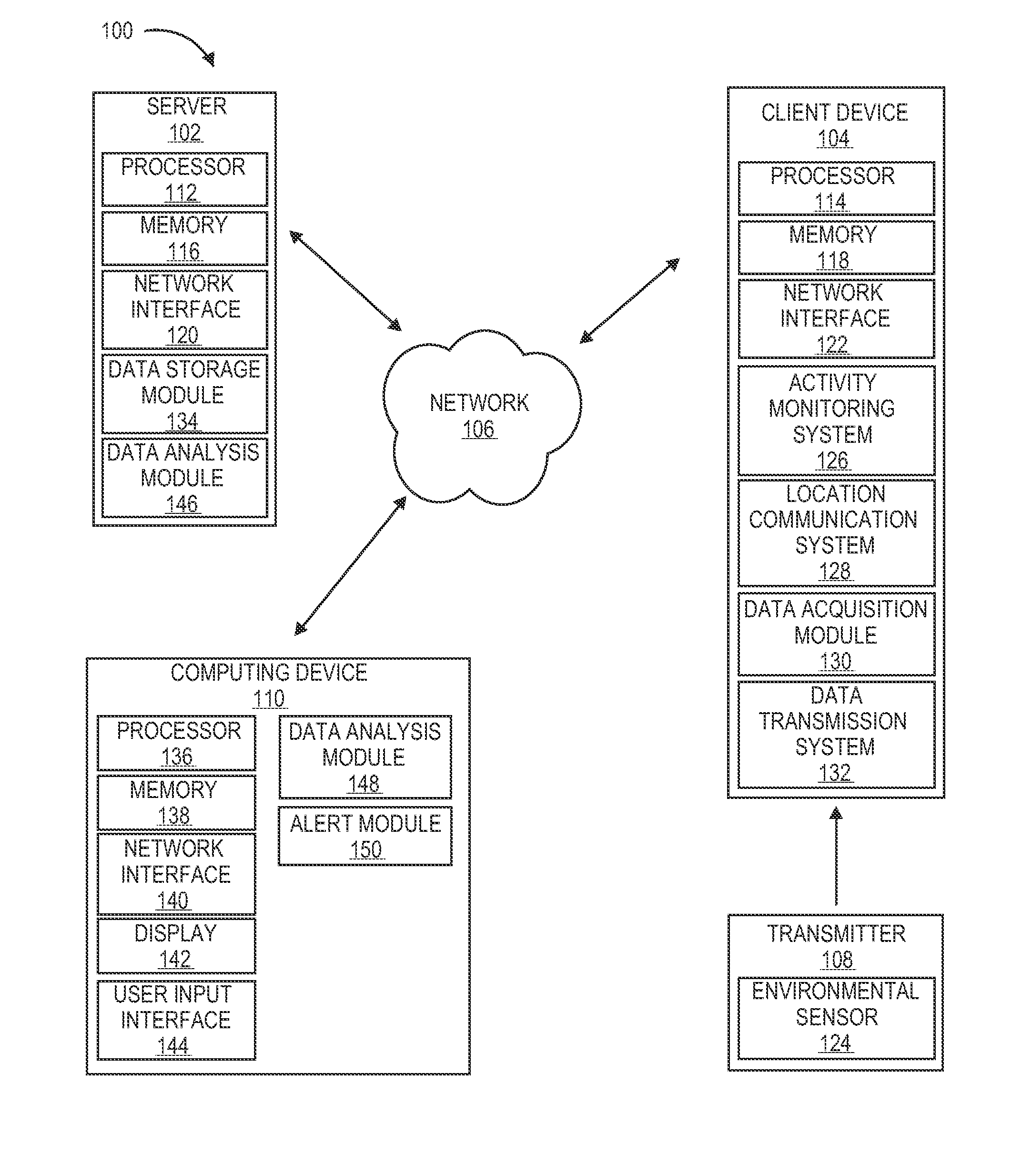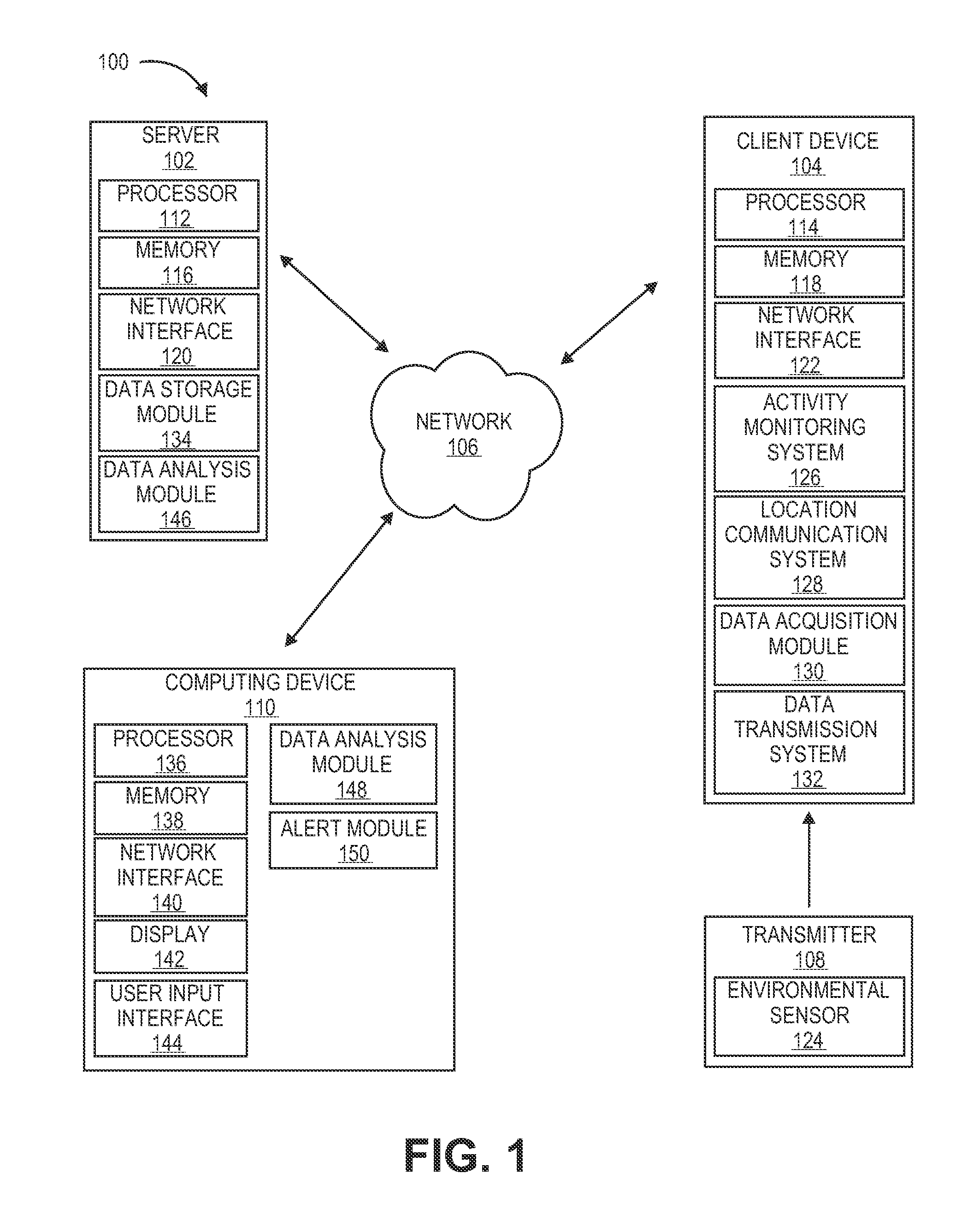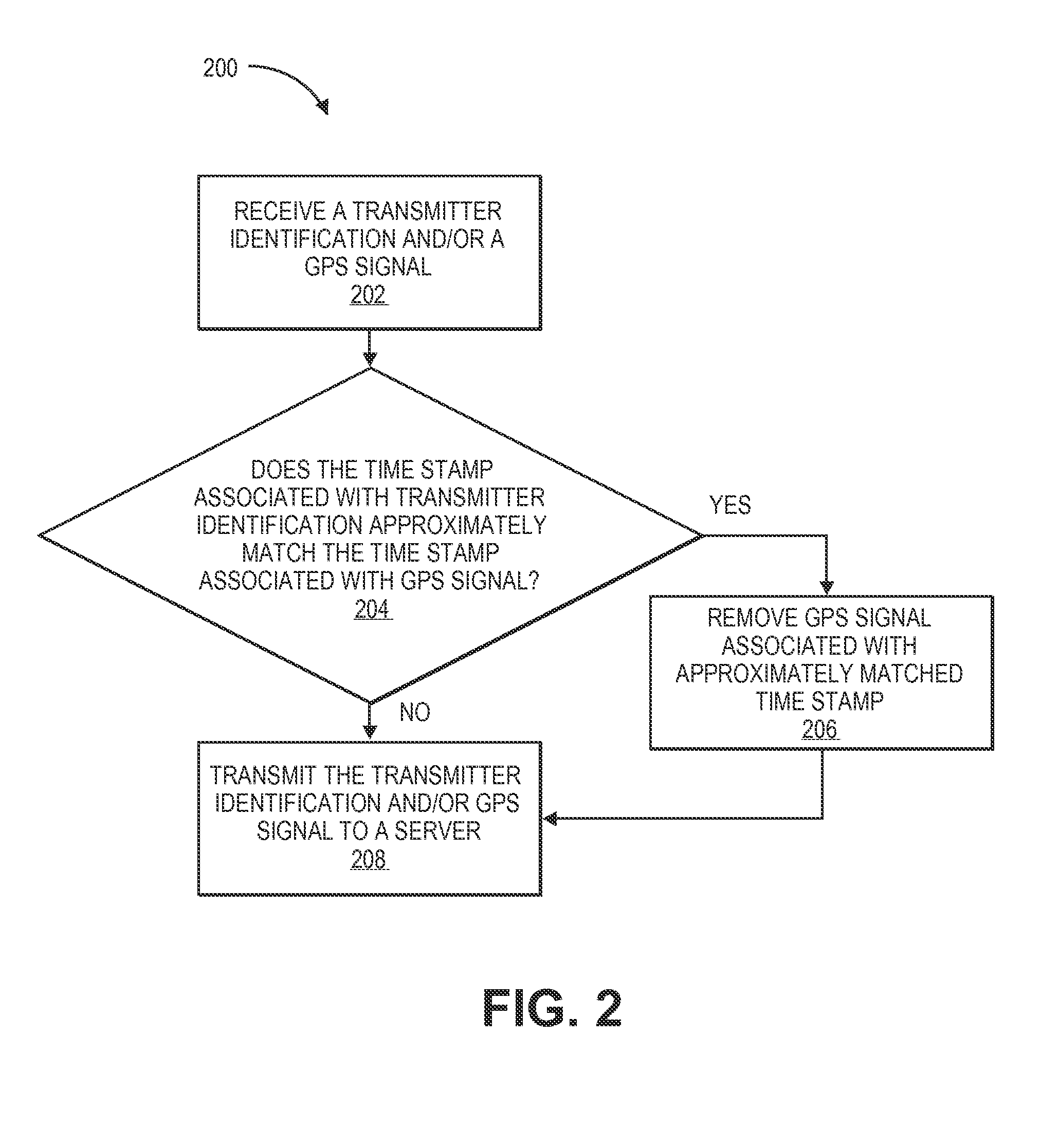Lifespace data collection from discrete areas
a technology of lifespace and data collection, applied in healthcare informatics, multiple digital computer combinations, instruments, etc., can solve the problems of inaccurate or current status reports of patients' mobility or overall activity, and achieve the effect of reducing the number of patients and improving the quality of li
- Summary
- Abstract
- Description
- Claims
- Application Information
AI Technical Summary
Benefits of technology
Problems solved by technology
Method used
Image
Examples
example environment
[0023
[0024]FIG. 1 illustrates an environment 100 in an example implementation where lifespace data may be collected and used to determine an individual's life functionality (e.g., mobility and / or overall activity). The illustrated environment 100 includes a server 102, a client device 104 that communicates with the server 102 via a network 106, a transmitter 108 that communicates with the client device 104, and a computing device 110 that communicates with the server 102 and the client device 104 via the network 106.
[0025]The server 102 may be configured in a variety of ways. For example, the server 102 may be configured as a server computer that is capable of communicating over a wired or wireless network 106. The server 102 may comprise a computer program and / or a physical computing system providing one or more services to serve programs running on other computers and / or on the server 102. For example, the server 102 may comprise a software / hardware based system implementing a com...
example procedures
[0072
[0073]The following discussion describes techniques to collect lifespace data from a client device (such as the client device 104 described in FIG. 1) and providing the lifespace data to a server (such as the server 102 described in FIG. 1). Aspects of each of the procedures may be implemented in hardware, firmware, or software, or a combination thereof. The procedures are shown as a set of blocks that specify operations performed by one or more devices and are not necessarily limited to the orders shown for performing the operations by the respective blocks. In portions of the following discussion, reference will be made to the environment 100 of FIG. 1.
[0074]FIG. 2 depicts a procedure 200 in an example implementation in which a client device receives lifespace data. As illustrated, lifespace data for a subject may be received at a client device (Block 202). For example, the client device 104 illustrated in FIG. 1 can be configured to acquire lifespace data for a subject from ...
PUM
 Login to View More
Login to View More Abstract
Description
Claims
Application Information
 Login to View More
Login to View More - R&D
- Intellectual Property
- Life Sciences
- Materials
- Tech Scout
- Unparalleled Data Quality
- Higher Quality Content
- 60% Fewer Hallucinations
Browse by: Latest US Patents, China's latest patents, Technical Efficacy Thesaurus, Application Domain, Technology Topic, Popular Technical Reports.
© 2025 PatSnap. All rights reserved.Legal|Privacy policy|Modern Slavery Act Transparency Statement|Sitemap|About US| Contact US: help@patsnap.com



